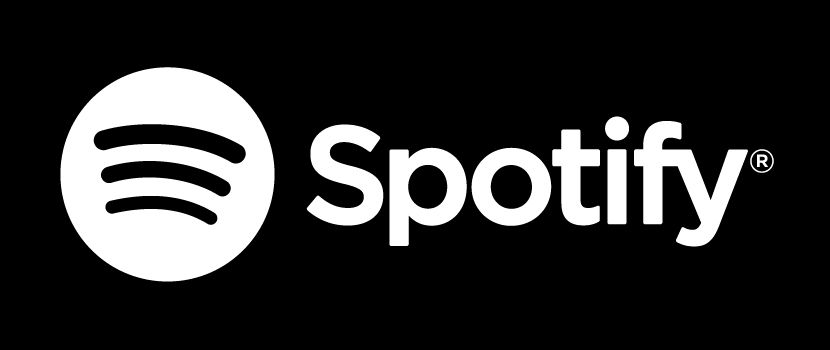- 📖 Table of Contents
- 📍 Overview
- 📦 Features
- 📂 Repository Structure
- ⚙️ Modules
- 🚀 Getting Started
- 🛣 Project Roadmap
- 🤝 Contributing
The "Spotify-Auth-Boilerplate" is a React-based web application template that replicates the core functionality of Spotify. With a clean folder structure and modular components, it provides a foundation for building personalized music streaming applications. The project leverages React, Redux for state management, and Spotify API integration for a seamless user experience.
Features:
Spotify-Auth-Boilerplate offers a streamlined structure for building Spotify Clone apps. With responsive design, Redux state management, and dynamic components, it simplifies the process of creating a feature-rich Spotify-like experience for users.
└── Spotify-Clone/
├── .eslintcache
├── package-lock.json
├── package.json
├── public/
│ ├── index.html
│ ├── manifest.json
│ └── robots.txt
└── src/
├── App.css
├── App.js
├── Banner.css
├── Banner.js
├── Controls.css
├── Controls.js
├── Dashboard.css
├── Dashboard.js
├── Header.css
├── Header.js
├── LeftMenu.css
├── LeftMenu.js
├── Login.css
├── Login.js
├── MenuItem-1.css
├── MenuItem-1.js
├── Redux/
│ ├── Reducer.js
│ ├── Store.js
│ └── rootReducer.js
├── Right.css
├── Right.js
├── SongListItem.css
├── SongListItem.js
├── SongsList.css
├── SongsList.js
├── Spotify-utils.js
├── index.css
└── index.js
| Directory | Summary |
|---|---|
| public/ | Public assets and HTML entry point |
| ├── index.html | HTML entry point for the application |
| ├── manifest.json | Manifest file for Progressive Web App (PWA) |
| └── robots.txt | Robots.txt file for search engine crawlers |
| src/ | Source code directory |
| ├── App.css | Styles for the main application component |
| ├── App.js | Main application component |
| ├── Banner.css | Styles for the banner component |
| ├── Banner.js | Banner component |
| ├── Controls.css | Styles for the controls component |
| ├── Controls.js | Controls component |
| ├── Dashboard.css | Styles for the dashboard component |
| ├── Dashboard.js | Dashboard component |
| ├── Header.css | Styles for the header component |
| ├── Header.js | Header component |
| ├── LeftMenu.css | Styles for the left menu component |
| ├── LeftMenu.js | Left menu component |
| ├── Login.css | Styles for the login component |
| ├── Login.js | Login component |
| ├── MenuItem-1.css | Styles for menu item 1 component |
| ├── MenuItem-1.js | Menu item 1 component |
| ├── Redux/ | Directory for Redux state management |
| │ ├── Reducer.js | Application state reducer |
| │ ├── Store.js | Redux store configuration |
| │ └── rootReducer.js | Root reducer combining all reducers |
| ├── Right.css | Styles for the right component |
| ├── Right.js | Right component |
| ├── SongListItem.css | Styles for song list item component |
| ├── SongListItem.js | Song list item component |
| ├── SongsList.css | Styles for songs list component |
| ├── SongsList.js | Songs list component |
| ├── Spotify-utils.js | Utility functions related to Spotify API |
| ├── index.css | Global styles for the application |
| └── index.js | JavaScript entry point for the application |
Dependencies
Please ensure you have the following dependencies installed on your system:
- ℹ️ NodeJS >= 16.x
- Clone the Spotify-Clone repository:
git clone https://github.com/jayanth-kumar-morem/Spotify-Clone- Change to the project directory:
cd Spotify-Clone- Install the dependencies:
yarn installyarn start-
ℹ️ Task 1: Implement Core Components- Develop key components such as Header, Dashboard, Song List, etc.
-
ℹ️ Task 2: Implement Styling- Apply styles to enhance the visual appeal of the application.
-
ℹ️ Task 3: Integrate Redux for State Management- Set up Redux for efficient state management in the application.
-
ℹ️ Task 4: Connect to Spotify API- Implement functionality to fetch data from the Spotify API.
-
ℹ️ Task 5: Display Song Information- Integrate API data to display relevant information about songs.
-
ℹ️ Task 6: Implement Playback Controls- Develop controls for playing, pausing, and skipping songs.
-
ℹ️ Task 7: Implement Playlist Management- Allow users to create, edit, and manage playlists.
-
ℹ️ Task 8: Deploy to Production- Deploy the application to a hosting platform (e.g., Vercel, Netlify).
Contributions are welcome! Here are several ways you can contribute:
- Report Issues: Submit bugs found or log feature requests for JAYANTH-KUMAR-MOREM.
Click to expand
-
Fork the Repository: Start by forking the project repository to your GitHub account.
-
Clone Locally: Clone the forked repository to your local machine using a Git client.
git clone <your-forked-repo-url>
-
Create a New Branch: Always work on a new branch, giving it a descriptive name.
git checkout -b new-feature-x
-
Make Your Changes: Develop and test your changes locally.
-
Commit Your Changes: Commit with a clear and concise message describing your updates.
git commit -m 'Implemented new feature x.' -
Push to GitHub: Push the changes to your forked repository.
git push origin new-feature-x
-
Submit a Pull Request: Create a PR against the original project repository. Clearly describe the changes and their motivations.
Once your PR is reviewed and approved, it will be merged into the main branch.










